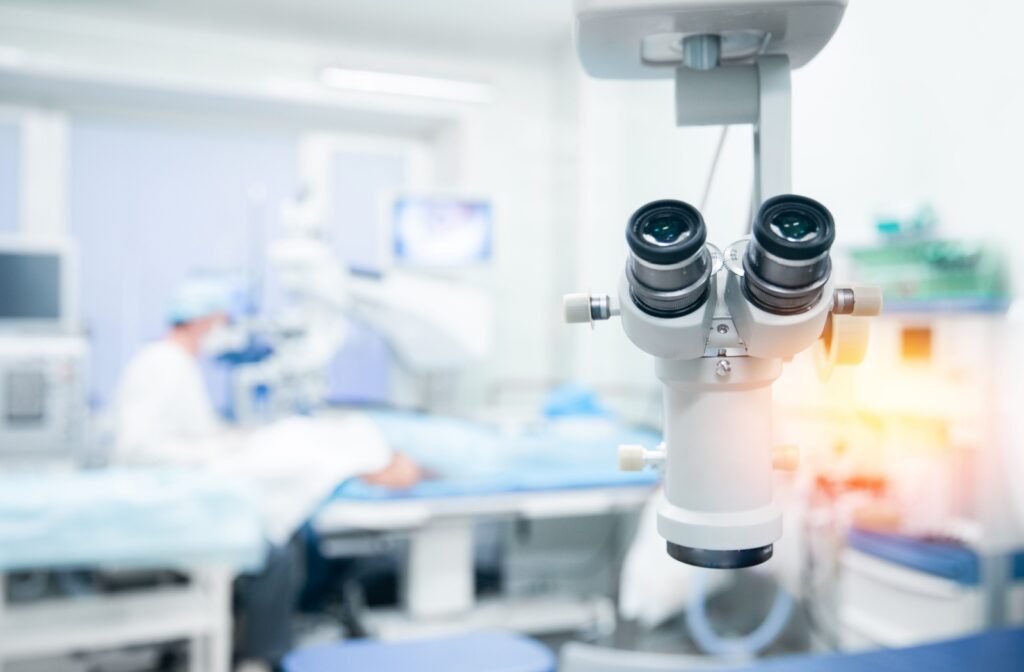LASIK eye surgery has helped millions of people reduce or eliminate their need for glasses and contacts, But what happens if your vision changes after the procedure?
In many cases, LASIK eye surgery can be performed twice. This is often referred to as a LASIK enhancement. Whether you’re noticing blurry vision years later or didn’t achieve the clarity you hoped for the first time, a second LASIK procedure may be an option.
Why Would You Get LASIK Twice?
Although LASIK is known for long-lasting results, some people experience changes in their vision over time. A second LASIK procedure—or LASIK enhancement—can help fine-tune your results if your prescription shifts after your initial surgery. Here are common reasons a second LASIK may be considered:
1. Residual Refractive Error
After the first procedure, some patients may still experience slight nearsightedness, farsightedness, or astigmatism. A touch-up may be performed to correct any leftover prescription.
2. Age-Related Vision Changes
Even if your LASIK results were perfect at first, age can bring new vision challenges. Conditions like presbyopia (difficulty focusing on close objects, typically starting in your 40s) or age-related myopia progression can cause blurry vision again.
3. Regression Over Time
In some cases, the cornea may slightly revert to its original shape months or years after surgery. This can lead to mild vision changes that weren’t present immediately after LASIK.
4. Expectations vs. Outcome
If the outcome of your first LASIK surgery didn’t meet your expectations—for instance, if you’re still dependent on glasses for certain tasks—a second procedure might help improve your results.
Reasons Vision May Change After LASIK Surgery
LASIK reshapes the cornea to correct how light focuses on the retina, but it doesn’t prevent natural changes that happen as we age or due to lifestyle and health factors.
Natural Vision Changes
Vision can continue to evolve throughout life, especially in your 40s and beyond. Presbyopia, for example, is a common condition that affects most adults as they age, making it harder to see things up close.
Hormonal Changes
Pregnancy, menopause, and other hormonal shifts can impact eye health and vision clarity.
Health Conditions
Medical conditions like diabetes or autoimmune disorders can affect your eyes and cause vision fluctuations even after LASIK.
Environmental Factors
Prolonged screen time, poor lighting, and eye strain can all contribute to changes in visual comfort and clarity, which might lead people to seek enhancements.

What Are the Risks of Getting LASIK Enhancement?
While a second LASIK procedure is generally considered safe, it’s important to understand the potential risks and whether you’re a good candidate.
1. Corneal Thickness
LASIK works by reshaping the cornea. If not enough corneal tissue remains from your initial surgery, a second LASIK may not be possible. Your eye doctor will assess the thickness of your cornea before recommending enhancement.
2. Dry Eye
LASIK can contribute to dry eye symptoms, especially in the first few months after surgery. A second procedure might increase the severity or duration of these symptoms.
3. Undercorrection or Overcorrection
As with any refractive surgery, there’s a chance that the enhancement may not fully correct your vision or may overcorrect it, requiring glasses or contacts for certain activities.
4. Infection or Healing Complications
Although rare, every eye surgery carries some risk of infection, inflammation, or delayed healing. Following post-op care instructions closely can help minimize these risks.
5. Night Vision Issues
Some people report halos, glare, or difficulty with night vision after LASIK. These symptoms can persist or worsen after an enhancement.
We will review your eye health, medical history, and current vision needs to determine whether a second LASIK procedure is appropriate for your situation.
What Happens During a LASIK Enhancement?
The process often includes:
- A comprehensive eye exam and corneal mapping
- Determining your current prescription and eye health status
- Discussing your expectations and whether an enhancement will help
- Reviewing pre- and post-op instructions, just like the first time
Recovery from LASIK enhancement is usually fast—most people notice improved vision within a few days.
Is There a Time Limit for Getting LASIK Twice?
There’s no strict time limit for getting LASIK again, but your eye surgeon will usually recommend waiting until your vision has stabilized. This could mean waiting 3–6 months after your first surgery or longer if you’ve had LASIK many years ago.
It’s also important to note that not everyone is a candidate for a second LASIK procedure. If your cornea is too thin or irregular, your doctor may recommend alternative treatments like PRK (photorefractive keratectomy) or implantable contact lenses.
Keeping Your Vision Clear After LASIK
Whether you’re considering your first LASIK procedure or thinking about an enhancement, maintaining good eye health is key. Here are a few simple tips:
- Schedule regular eye exams to monitor your vision and eye health
- Wear sunglasses to protect your eyes from UV rays
- Limit screen time and use the 20-20-20 rule to reduce digital eye strain
- Eat a balanced diet rich in vitamins A, C, E, and omega-3s for eye support
- Stay hydrated and manage any chronic health conditions like diabetes
Thinking About LASIK Enhancement?
If you’ve had LASIK in the past and your vision isn’t as clear as it used to be, you may be a candidate for a second procedure. LASIK enhancements are safe, effective, and often provide great results for patients who meet the criteria.
At Total Vision Hercules in Hercules, CA, we’re here to support your long-term eye health and vision goals. If you’re curious about LASIK enhancements or want to explore your options, request an appointment today—we’ll help you see clearly again.



